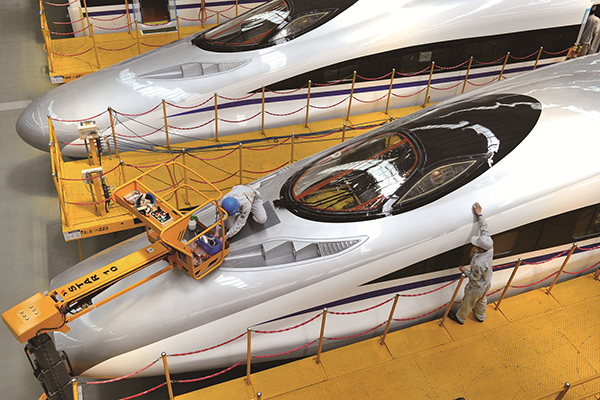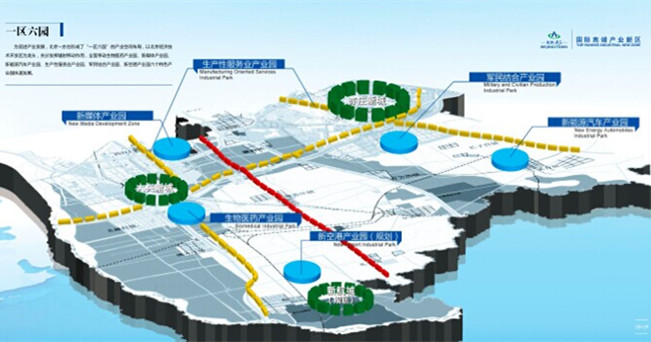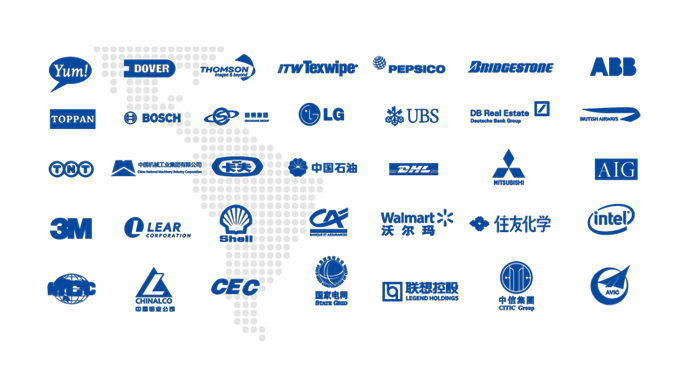SOEs to take lead role along Belt and Road
( China Daily )
 |
|
A CRH train production site of CRRC's Qingdao Sifang Co Ltd in Qingdao, Shandong province. [Photo/Xinhua] |
China's central State-owned enterprises will be the country's major force driving the Belt and Road Initiative, with their respective projects, plans and business layouts all in place by 2020, the top State-owned assets regulator said on Monday.
Before putting business plans into practice to further tap Belt and Road markets, the SOEs under central government administration are following stringent rules assessing projects, making feasibility studies and analyzing markets during the period of the 13th Five-Year Plan (2016-20).
"SOEs are the market backbones. They have their own plans and strategies for the Belt and Road drive, in addition to the country's overall blueprint for the initiative," Xiao Yaqing, chairman of the State-Owned Assets Supervision and Administration Commission of the State Council, told reporters on Monday.
As central SOEs have lengthy experience in setting up and managing transportation, energy, telecommunication and power projects, based on their financing ability, technology advantages and management expertise, Xiao said, adding that the regulatory agency is encouraging them to seize more market opportunities related to the Belt and Road push.
To help enterprises fend off potential risks, the State-asset watchdog will tighten supervision and punishment measures by providing more policy guidelines. Blind investment and bad administrative decisions leading to heavy financial losses will be headed off in a timely manner and strictly punished, according to the SASAC.
In addition, the SASAC will work with global partners such as the World Bank and the United Nations Industrial Development Organization to assess risks and avoid losses.
To date, central SOEs have invested in 9,112 subsidiaries in 185 countries and regions. Forty-two central SOEs have participated in 1,676 Belt and Road projects via business models such as establishing joint ventures, making direct investments or becoming shareholders.
"The SASAC will encourage central SOEs to deepen cooperation with economies along the initiative in sectors such as equipment manufacturing, technology exports, standard-setting and management to advocate mutual benefits," Xiao said.
Liu Hualong, chairman of China Railway Rolling Stock Corp Ltd, said the country's top railway vehicle maker will deliver the first group of metro cars to Istanbul from its manufacturing facility in Turkey later this year.
"The facts prove that the Belt and Road Initiative has become part of international efforts to pursue joint development and common prosperity for economies to gain new growth momentum," Liu said.
Shu Yinbiao, chairman of the State Grid, said his company will further promote the standardization of China's leading patent technologies that are exported globally, such as ultra high voltage and smart grids.
The company has constructed 10 cross-border power transmission lines, including the China-Russia and the China-Kyrgyzstan lines. It is working on the Shivee-Ovoo, Mongolia to Hebei province project and others to strengthen power interconnection between China and neighboring countries.
In the rail sector, the Ethiopia-Djibouti railway is now in operation, with the Mombasa-Nairobi railway scheduled to open soon. The China-Laos railway is under construction and the China-Thailand railway is being accelerated.
In addition to business reruns, Xiao said Chinese companies' participation in the Belt and Road Initiative can help narrow the gap between landlocked areas and coastal countries and regions, thus bringing more benefits to participating economies.
 The Area with Six Parks
The Area with Six Parks Global Top 500
Global Top 500